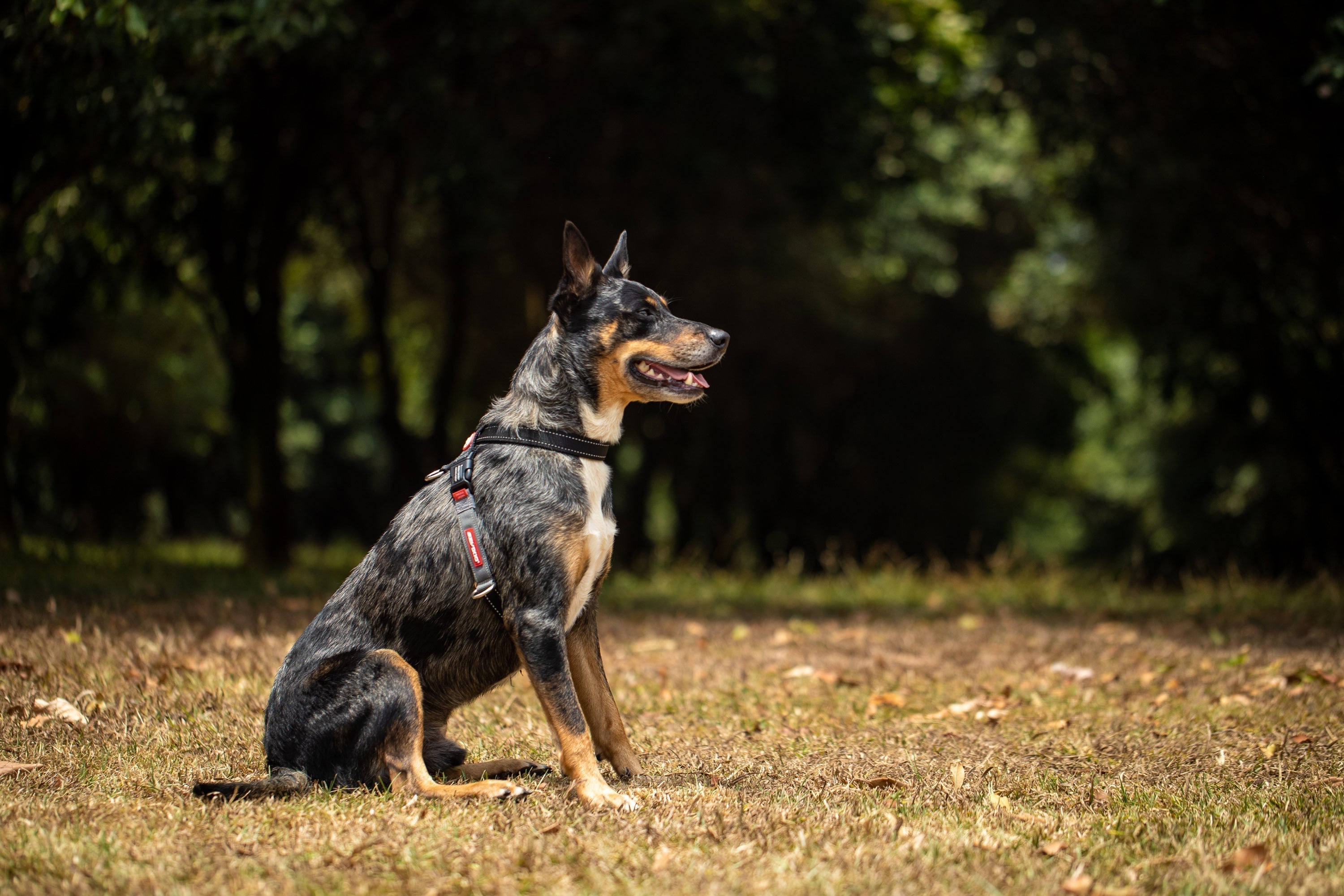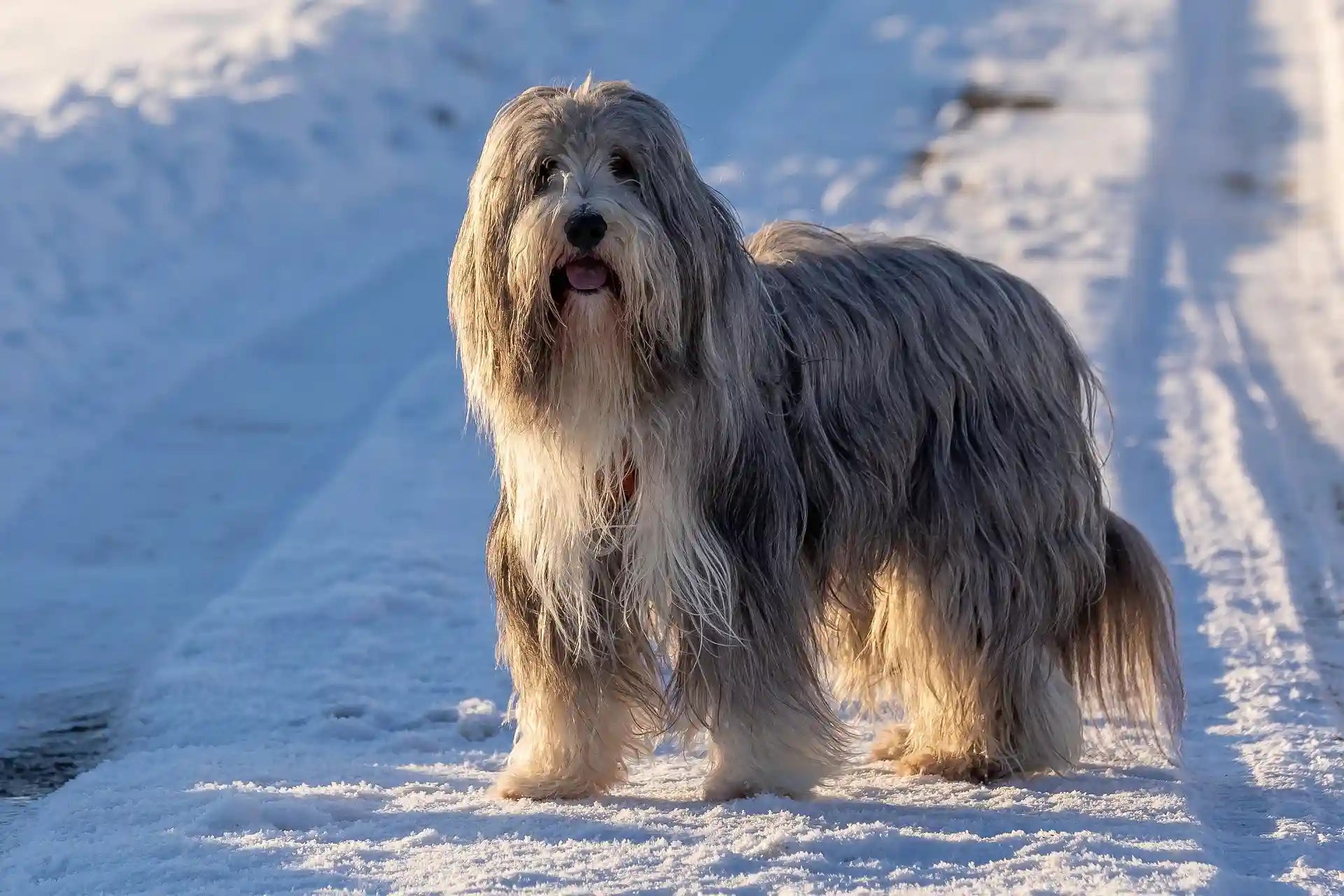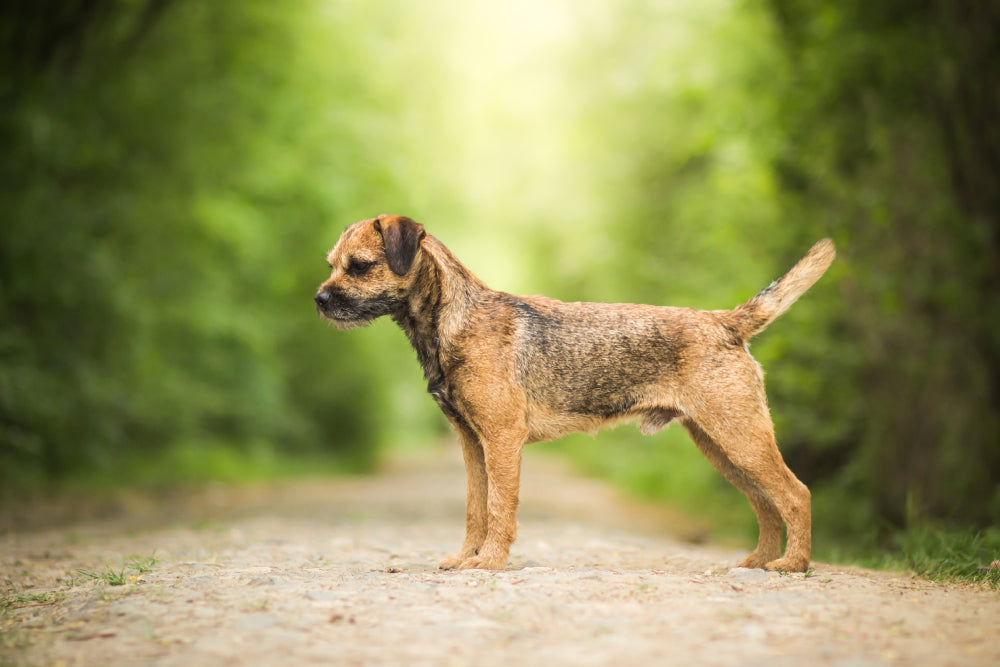
How to Train Your Dog to Walk on a Leash (Step-by-Step Guide)
If you’ve ever felt like your arm was about to come off during a walk with your dog, I’ve been there. When I first started lead training with my pup, I thought it’d be a breeze. Spoiler: it wasn’t. But with the right tools and a bit of patience, things turned around, and walks are now something we both look forward to.
In this guide, I’ll share the exact steps I followed, the gear I used (including a harness that changed the game), and the small tweaks that made the biggest difference. Whether you're starting from scratch or looking to fix bad habits, this one's for you.

Why Proper Lead Training Matters
Walking on a loose lead isn’t just about avoiding arm strain–it’s about building trust and communication with your dog. Good lead manners mean:
-
Safer walks with less risk of injury or accident
-
Better control around distractions like other dogs or cyclists
-
Less stress for both of you
-
A calmer, more engaged walking experience
And if your dog pulls constantly? That’s stress on their neck, shoulders, and your sanity. Over time, pulling can lead to physical strain and behavioural issues if not corrected.
Step 1: Choose the Right Gear
Before I even stepped outside, I swapped my basic collar for a no-pull harness. I personally use the EzyDog Crosscheck Harness because it gently discourages pulling without causing discomfort. It’s easy to fit, comfortable for my dog, and gives me better control without yanking or choking.
I paired it with the EzyDog Essential Leash–simple, reliable, and just the right length for training. Avoid retractable leads at this stage–they often encourage pulling and don’t offer consistent feedback or control.
Step 2: Get Your Dog Comfortable With the Gear
Dogs pick up on energy quickly. If the harness or lead feels stressful, they’ll resist it. So I let my dog wear the harness indoors for a few minutes each day. No pressure, no lead attached–just treats and praise. This step helps your dog associate the gear with something positive.
Once she was relaxed, I clipped on the lead and practised walking around the house. I kept treats handy in the SnakPak Training Treat Bag–super useful when you need both hands free and want to reward often.
Step 3: Start Indoors or in the Backyard
Before we ever hit the street, we practised inside and in the backyard. I’d walk a few steps, call her name, and reward her for staying close. Short, focused sessions (5–10 minutes) worked best, and I made sure to end on a good note.
I avoided training when she was overly excited, hungry, or distracted. Calm, controlled moments are the sweet spot. This helped set us up for better behaviour outside.
Step 4: Head Outside–But Keep It Simple
Our first outdoor walks were in quiet areas, like a nearby footpath or local oval during off-peak hours. I kept the route short–around 10 minutes–and used high-value treats to reinforce good behaviour.
Here’s what worked:
-
I stopped walking every time she pulled.
-
When she turned to look at me, I praised her.
-
I resumed walking only when she calmed down.
If she stayed beside me or checked in, she got a reward. This built the habit of checking in often.
Step 5: Stay Consistent
This was the hardest part. Some days were great; others felt like square one. But dogs thrive on repetition. We kept our walks consistent in timing, gear, and cues.
Key reminders:
-
Use the same lead and harness each time.
-
Use consistent commands (“let’s go”, “easy”, etc.).
-
Reward frequently in the beginning, taper as they improve.
Within two weeks, she walked beside me calmly for most of the walk, and that’s a win.
Common Mistakes to Avoid
Don’t beat yourself up if progress stalls–it happens. Here are some things I had to correct:
-
Letting pulling slide “just this once” – it confuses your dog.
-
Skipping the warm-up indoors – this step builds confidence.
-
Using the wrong gear – a good harness like the Crosscheck Harness helps prevent bad habits.
-
Overdoing it – tired dogs can’t focus. Keep sessions short.
A Command Training Clicker helped sharpen her focus, especially when I needed to interrupt distractions or mark good behaviour quickly.

What Worked Best for Me
Here’s what made the biggest difference:
-
Crosscheck Harness: Encouraged calm walking without discomfort
-
Essential Leash: Lightweight, durable, and just long enough for training
-
SnakPak Treat Bag: Easy treat access makes consistency easy
-
Positive reinforcement: Praise, food rewards, and patience
-
Short, repeatable sessions: 10–15 minutes, 2–3 times daily when possible
Still Struggling? You’re Not Alone
Every dog is different. Some learn in a few sessions, while others need weeks of consistent effort. Don’t compare your dog’s progress to others–just keep showing up.
If needed, reach out to a positive-reinforcement trainer who can help tailor advice to your dog’s behaviour and breed.
Final Tips Before You Head Out
-
Always carry treats or a clicker for real-time feedback.
-
Practice in low-distraction environments before busy areas.
-
If your dog starts pulling, stop. Reset and go again.
-
Celebrate small wins–every calm step counts.
And remember: lead training isn’t about control–it’s about partnership.
Final Thoughts
Ready to Make Walks Enjoyable Again? If you’re just starting your training journey or you’ve tried before with no luck, I can’t recommend the right gear enough. You don’t need to fight every step.
With tools like the EzyDog Crosscheck Harness, Essential Leash, and SnakPak Treat Bag, walks can become your dog’s favourite part of the day–and yours too.
Browse our full range of dog harnesses and find what works best for your furry mate.
Got questions or a training story to share? Drop a comment. I’d love to hear how it’s going for you.





Leave a comment
This site is protected by hCaptcha and the hCaptcha Privacy Policy and Terms of Service apply.